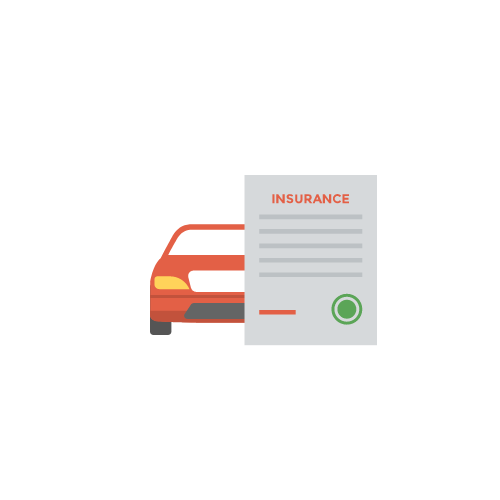Auto Repair Guide-How To Help The Insurance Claims Process Go Smoother
- Auto Repair Guide-How To Help The Insurance Claims Process Go Smoother
- What to Expect from Auto Repair Claims
- Auto Repair Guide -Preventive Maintenance
- Frequently Asked Questions
- What Basic Tools Are Needed for Auto Repairs?
- How Often Should Routine Auto Maintenance Be Performed?
- Can I Perform Auto Repairs Myself Without Voiding the Warranty?
When it comes to auto repairs during the claim process, it is good to know what to expect. While insurance carriers may vary in their process and procedures, there is a standard workflow.
We created an auto repair guide and here are a few things you can expect once the repair process begins whether your insurer or the other party’s insurer is paying.
What to Expect from Auto Repair Claims

Picking an Auto Repair Shop-Unless stated in your auto policy you can decide where to take your car for repairs. An important thing to note is that if the body shop you prefer is higher than what the insurer’s estimate, you may be responsible for the difference.
Pro-tips for choosing a repair shop:
| Ask for referrals from people you trust. |
| Share the insurance company’s estimate with your chosen shop to be sure all work on the estimate is within their scope. |
| Ask your preferred shop to provide a detailed quote in writing so you can ask your insurer to approve the estimate. |
| Inquire about a lifetime warranty on repairs; this shows a facilities trustworthiness. |
Preferred Auto Repair Facilities -Companies like Progressive and Travelers have streamlined the process so much they have their own claim repair centers. You take your vehicle, go over the damage with an adjuster, sign off, pick up your rental and be on your way.
Depending on the facility, repairs may not be done on site and your car is taken off-premise for repairs. The adjuster will communicate all of this to you. Companies are pretty good about giving out all their contact information. If you do not feel your questions or needs are being reasonably met, you may go up the chain of command. However, if your vehicle has hail damage, for example, insurance adjusters and body shops become very busy.
The Repair Estimate– For the estimate, knowledge of what your policy covers will be significant. Policies allow for original equipment manufacturer parts, but they may be recycled, check to see what your policy says. You do however have the right to choose OEM parts vs. aftermarket parts. Be sure to look at your estimate carefully; it will say which parts are quoted. If you have issues discuss them with your adjuster, the body shop may not control the parts being used. Once you have signed off on the estimate, repairs will begin.
Getting Your Car Back– When you get that exciting call your vehicle is ready for pickup, there are few more things you must do before closing the claim. Before you head off their lot, be sure to:

| Look at the appearance of the repair vehicle from up close and far away. |
| Check the paint for color match, texture, and over-spray. |
| Take a test drive if mechanical repairs were made. |
| Make sure the vehicle is clean. |
| If there are any concerns, tell them immediately. |
Repair times can vary if you suspect it is taking longer than necessary call your body shop. If you can’t get them to give you an answer, contact the claims adjuster.
Payment for Repairs – Depending on your claim situation, the insurance company may pay the shop or may pay you, and you handle paying the shop.
While we cannot stop accidents from happening, we can do our best to lessen them. Proper maintenance of vehicles can minimize certain accidents caused by poor car care.
Auto Repair Guide –Preventive Maintenance

Proper car care can prevent accidents and help maintain the value of your vehicle. Following the suggested maintenance schedule of your car is an excellent place to start and here’s why:
| Regular Oil Changes/Fluid Checks | taking your car in for regularly scheduled oil changes and checks will extend the life of your vehicle. It also helps to prevent accidents caused by a stalled vehicle on the road. |
| Regular Tire Rotation/Replace | rotating and replacing tires helps to maintain traction and keep balance. This is especially important when driving on slick roads, preventing rear-end accidents. |
| Proper Exterior/Interior Care | well cared for cars on the inside and out hold much more in value. Whether you are trading in vehicles or dealing with a replacement value from an insurance company, a well-maintained car will be worth it. |
Claims are never a fun situation, and you want them to go as smooth as possible so you can resume your normal life. We hope this Auto Repair Guide was able to answer any questions you might of previously had, or to get you jump started in the right direction if you ever need to file a claim!
If you find yourself with any concerns during the claim process, please call us. We are happy to help.
We are social! Connect with us on Facebook !
Frequently Asked Questions
What Basic Tools Are Needed for Auto Repairs?
How Often Should Routine Auto Maintenance Be Performed?
Can I Perform Auto Repairs Myself Without Voiding the Warranty?
Last Updated on by Amanda Moss

